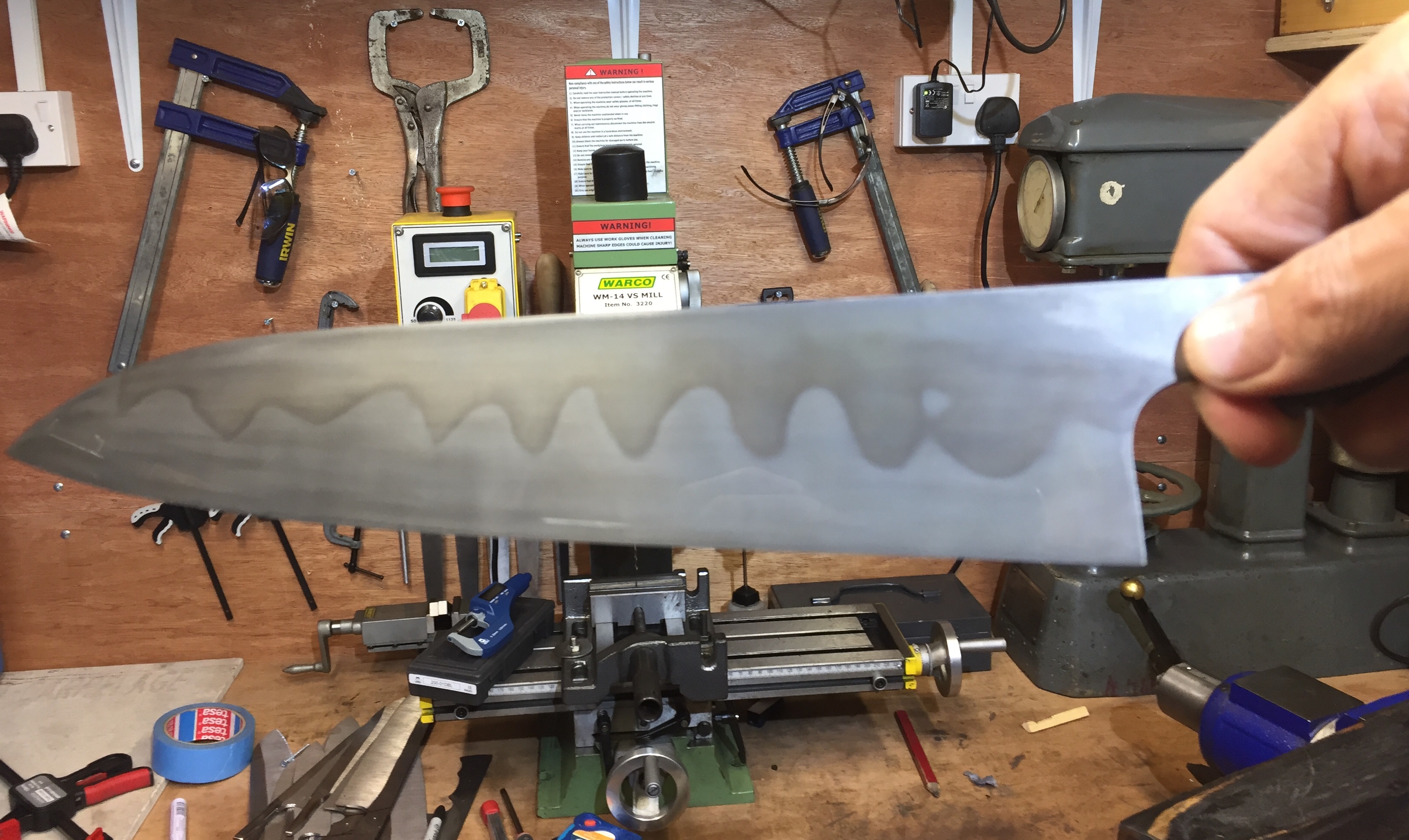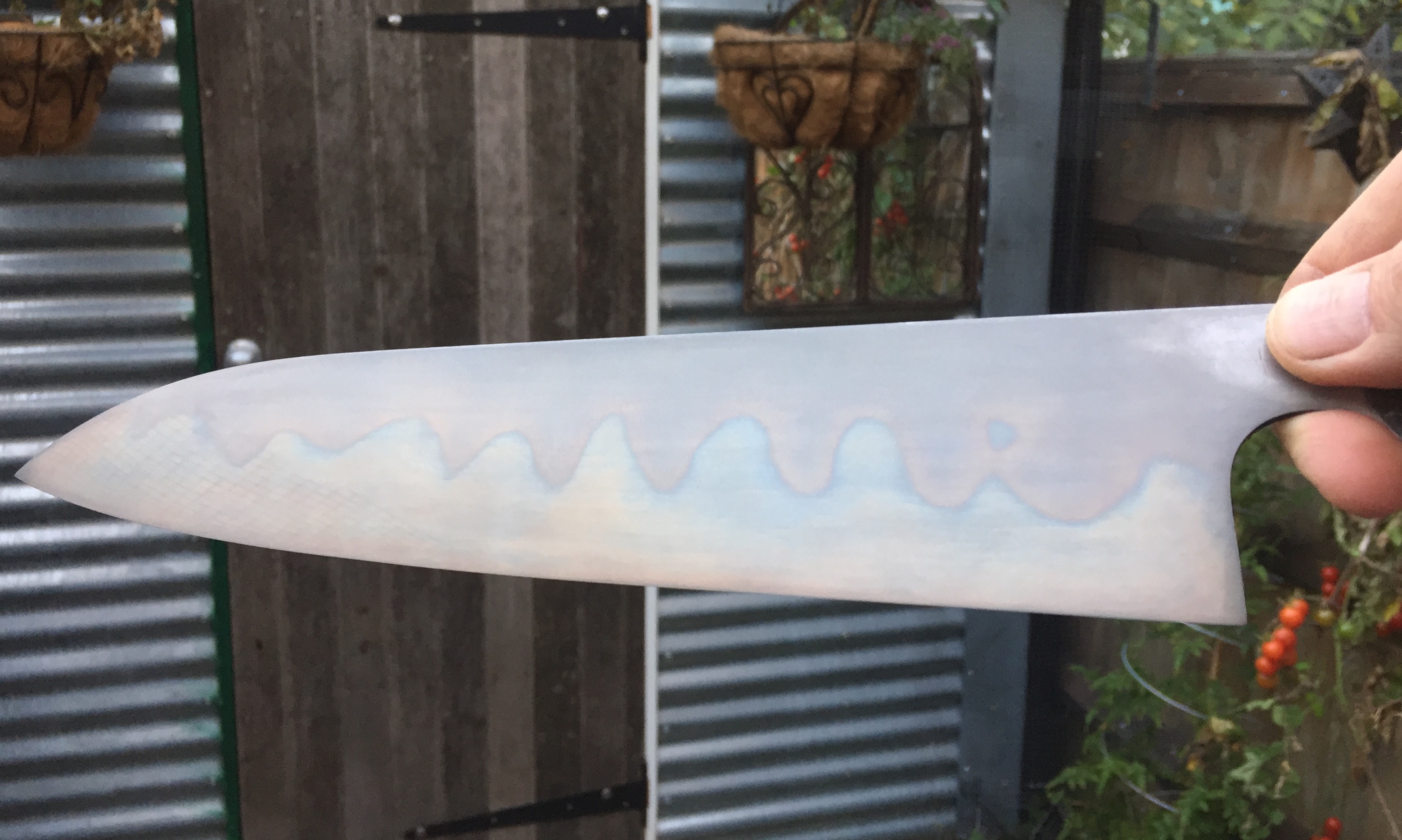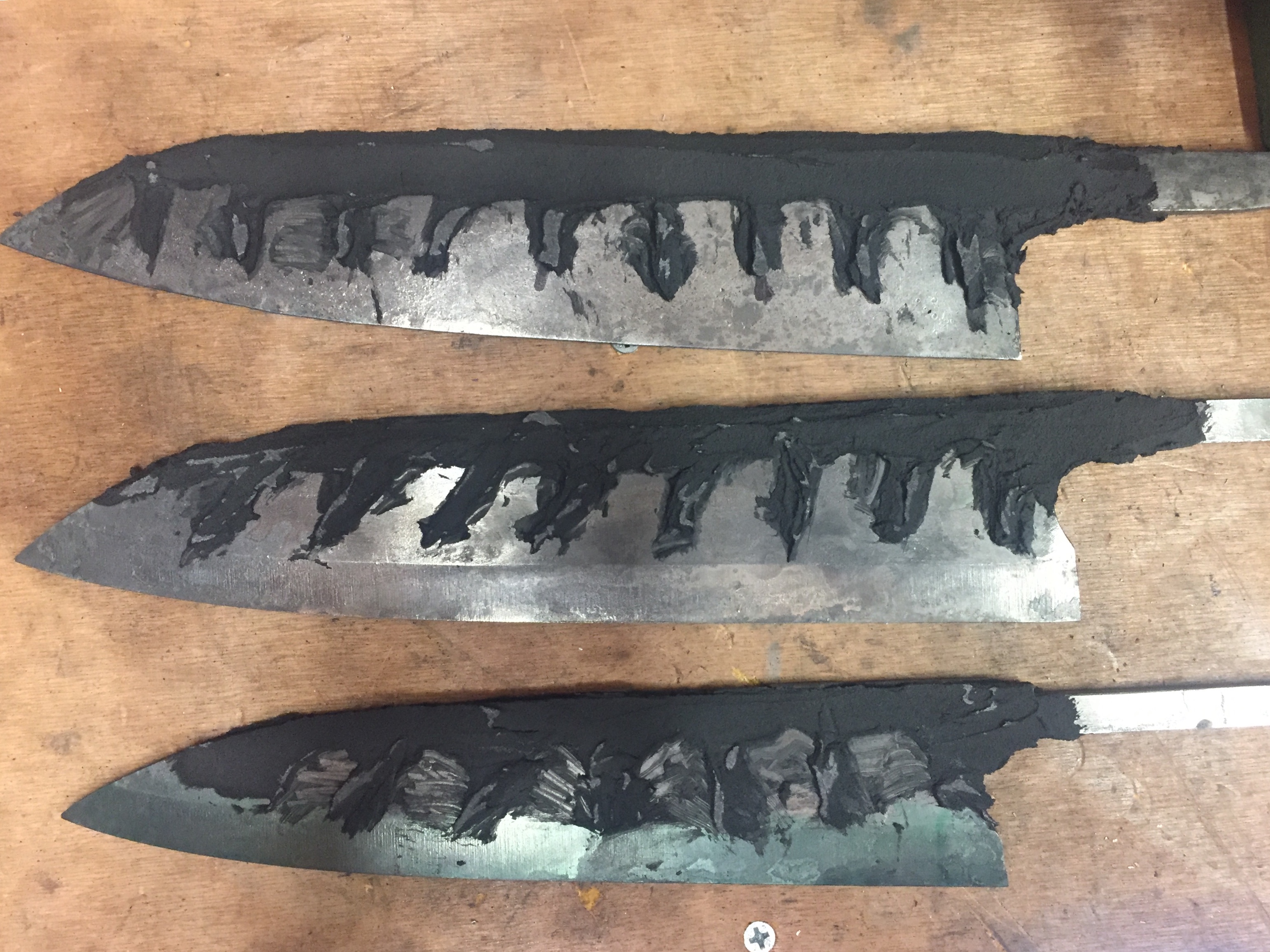I hope the image works. Gyuto in 1095. I cut, profiled and half ground 6 blades in 210-270 sizes, thermal cycled them to reduce grain and then promptly broke 4 in the quench (brine). I did the last two in a fast oil and I think that's the way forward for me from now on. There's still plenty of ham in the hamon and I won't put hours of work into something just to have it break.
Post temper hardness is 61RC so should be tough enough for honest work and still fairly easy to sharpen. I think thin sections like knives cool plenty fast in oil so reach full hardness. This needs finishing as it's only at 400 grit, I was just excited as it's my first play with clay and hamons.

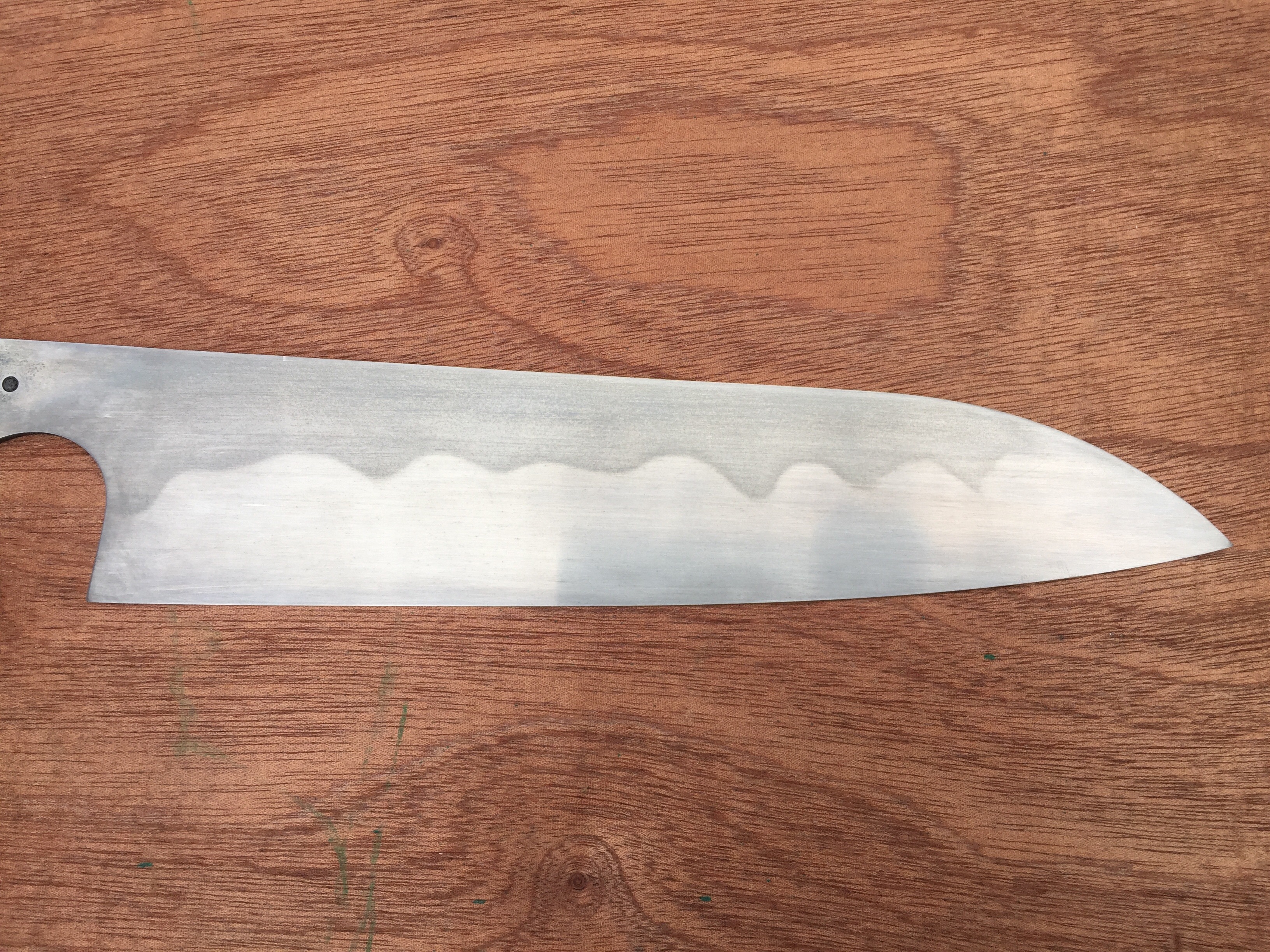
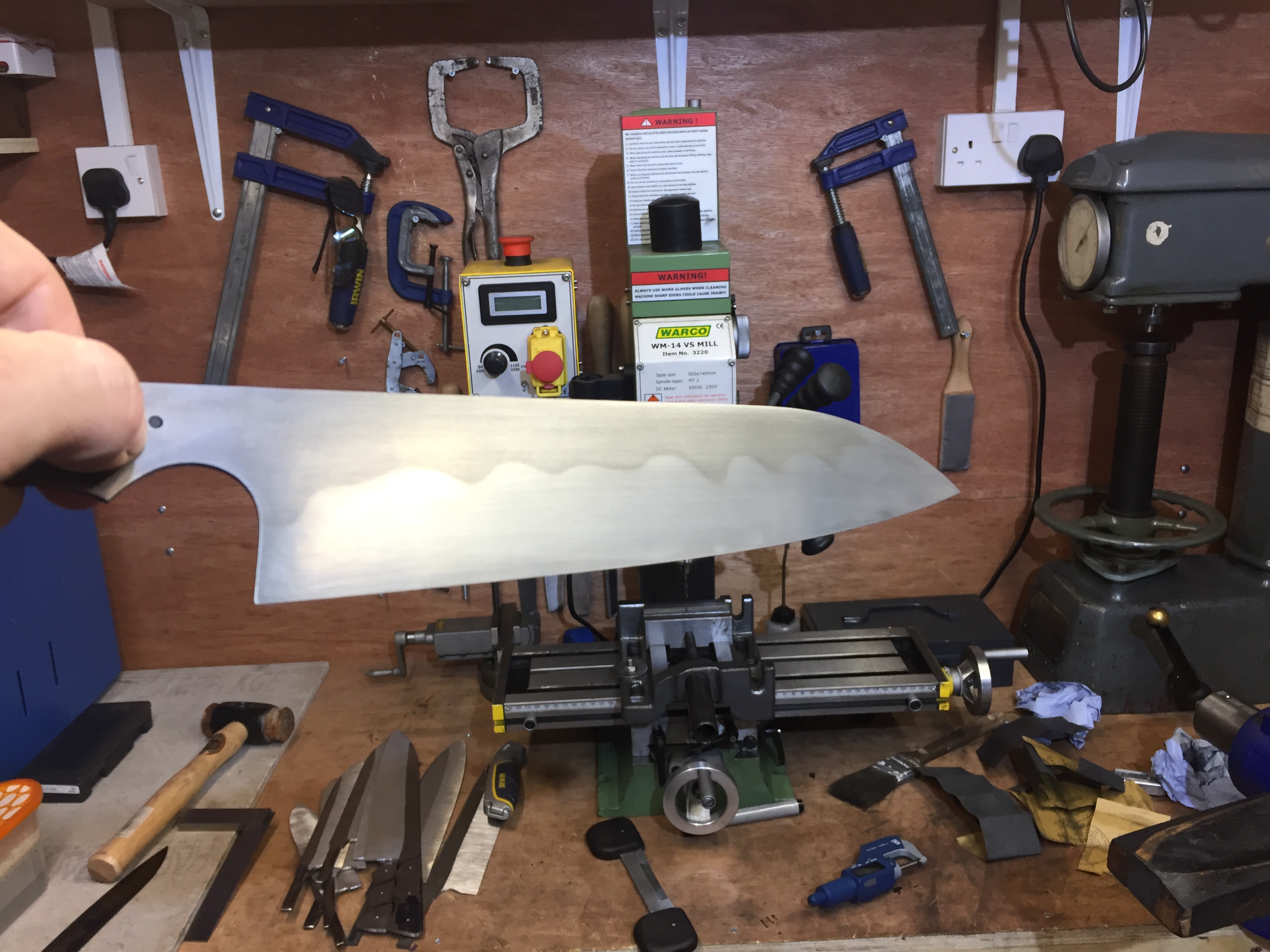
Post temper hardness is 61RC so should be tough enough for honest work and still fairly easy to sharpen. I think thin sections like knives cool plenty fast in oil so reach full hardness. This needs finishing as it's only at 400 grit, I was just excited as it's my first play with clay and hamons.








